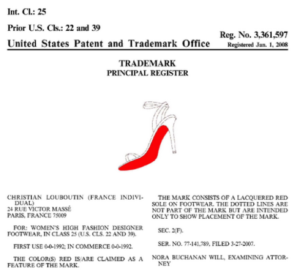Protecting Your Trademark: Registration is Just the Beginning
Trademarks protect your company and its image, period. They are your brand. Protecting yourself with a trademark is one of the easiest and most effective ways to maintain your company’s reputation. It is very common in any industry for another company to attempt to piggyback off the reputation of a company that has already gained the trust and confidence of its consumers.
A company’s reputation is critical to its survival. For a company to succeed it must hold the trust and confidence of its consumers. Your brand should automatically correlate with your company’s quality service or products and may even give your company preference over other similar companies simply because of name recognition. Developing consumer trust and confidence can be a challenge and once accomplished it can easily be destroyed by just one or two bad instances. If another company is using your name without your permission, and they are not providing quality service, then your company will likely feel the effects. This is why it is so important to protect the reputation and the name of your company.
In some cases, a company’s trademark is its most valuable asset. The most valuable trademark on the planet belongs to Google, and is valued at around $44 billion, which is nearly 27% of Google’s overall value.1 This means Google’s trademark makes up over a quarter of the companies value.
But just because you trademark your company’s name does not mean it automatically becomes a super valuable asset. The path to a great brand is littered with casualties. Many of these casualties are members of the “once were, now has been” brands, such as Asprin, Cellophane, Escalator, Trampoline, Thermos, Dry Ice, App Store, ZIP Code, and Webster’s Dictionary are just some of the many trademarks that have lost protection due to genericization, non-renewal, or improper issuance. Brands are lost because their owners register their trademark and forget about it, believing they are off the hook. To build a lucrative brand that will not become a “has been” you must protect yourself by enforcing your trademark from brand bandits that are ready and eager to benefit from your success.
The registration of your trademark is only the beginning of the brand protection process. Enforcement in the digital age is an ongoing process of awareness and communication, both within an organization and with expert IP counsel on your team.
Enforcement means being aware and proactive. It is important you understand and are mindful of what is happening in the marketplace in which your trademarks exist. This includes your own use, use by licensees, distributors and affiliates, as well as unrelated third parties. It also means a proactive stance towards managing risks that can weaken you trademarks value or in some cases result in a complete loss of your trademark rights.
 A great example of the constant battles a company must go through to protect its trademark is Louboutin’s trademarked red sole. Louboutin’s red sole has become so recognizable that, unless you live in the most remote part of the world, and even then, as long as you have access to the internet, any person who sees a shoe with that beautiful red lacquered sole will automatically think it is a Louboutin. However, Louboutin is constantly fending of trademark bandits trying to capitalize on this valuable mark such as Zara, a Spanish fast-fashion retailer, and Yves Saint Laurent, a high end American retailer.3&4 While Louboutin has not always been successful in fending off all copycats it has been successful in ensuring that only true Louboutin’s can have the sought after contrasting red lacquered outsole. Louboutin spends a substantial amount of money each year just protecting its trademark and ensuring that no unauthorized use is occurring and as a result has created a very lucrative brand.
A great example of the constant battles a company must go through to protect its trademark is Louboutin’s trademarked red sole. Louboutin’s red sole has become so recognizable that, unless you live in the most remote part of the world, and even then, as long as you have access to the internet, any person who sees a shoe with that beautiful red lacquered sole will automatically think it is a Louboutin. However, Louboutin is constantly fending of trademark bandits trying to capitalize on this valuable mark such as Zara, a Spanish fast-fashion retailer, and Yves Saint Laurent, a high end American retailer.3&4 While Louboutin has not always been successful in fending off all copycats it has been successful in ensuring that only true Louboutin’s can have the sought after contrasting red lacquered outsole. Louboutin spends a substantial amount of money each year just protecting its trademark and ensuring that no unauthorized use is occurring and as a result has created a very lucrative brand.
The act of enforcement also includes making sure federal registrations are maintained. The Trademark Office requires periodic filings or they will cancel your registrations.5 Also, trademark owners must “police” their marks against unauthorized use or they risk losing valuable rights. Even if another company has your permission to use your trademark it is important to teach authorized users to use the mark correctly and very important to continually monitor their use to ensure your mark is not being tarnished. Many trademarks have been lost through neglect and failure to take simple steps to eliminate infringers.
An intellectual property attorney can assist you in the best ways to protect your mark. One example may be to initiate a trademark watch, which is a service that can monitor new applications being filed with the USPTO for marks that are similar to yours so that you and your attorney can identify if they are potentially likely to cause confusion with your mark. If you identify a mark that is likely to cause confusion with your mark, you and your attorney should consider whether to file an opposition to the mark you have identified. When filing or protecting a trademark you should make sure to involve an experienced intellectual property attorney such as those at ARC IP Law.
Danna Cotman is the founder of ARC IP Law and has a background in Fashion Design, a Master’s in Business Administration, and has years of experience registering, enforcing and protecting trademarks.

